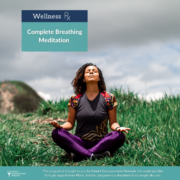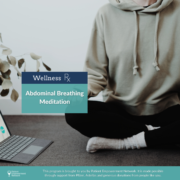Body Parts Meditation
Body Parts Meditation from Patient Empowerment Network on Vimeo.
Learn about cultivating present moment awareness and staying grounded by focusing your attention on different parts of the body.
See More from Rx for Community Wellness
Related Programs:

|

|

|
Transcript:
Greetings everyone. Thank you for joining this Patient Empowerment Network program. In this practice session we will be cultivating present moment awareness by focusing the attention on different parts of the body.
Before we start the practice, I want to state that focusing your attention on the body can have a grounding effect. Nonetheless, if you find this practice difficult for whatever reason, including health related or a traumatic history, please do not force it. I encourage you to be gentle and kind to yourself. Accept yourself where you are in this process. Attend softly and your capacity will build over time. To start our practice, find a comfortable seat. A chair is perfectly fine. And you may make arrangements to support your back if necessary. Or you may lie down on your back for this particular practice. Allow your eyes to softly close if you feel comfortable doing so. Begin to feel into the weight of your body being supported by whatever you are seated on or lying on. Notice any sensations without judgment of good or bad, without pushing anything away or grasping at anything. Just allow yourself to notice to the best of your abilities. If you do not feel anything, it’s ok. No need to force it. Be open to it. Whatever arises without judgment. Begin to softly bring your attention to your right foot. You may wiggle your toes to help you go there. Attending to any sensations that may arise or not without judgment. Begin to move your attention to your left foot. Attending softly without judgment. Moving your attention to your right leg. Feeling, sensing, noticing. Then bring your attention to your left leg. Moving to your right hand, attending softly without judgment. Then your left hand. Then to your right arm. Feeling, sensing, noticing. To your left arm. Bringing your attention to your head. Then your bringing your attention to your abdominal area, your belly area. Feeling, sensing, noticing. And then to your attention to your chest. From here bring your attention back to feeling the weight of your body in your seat. Gently open your eyes. We hope you enjoyed this Patient Empowerment Network program.




